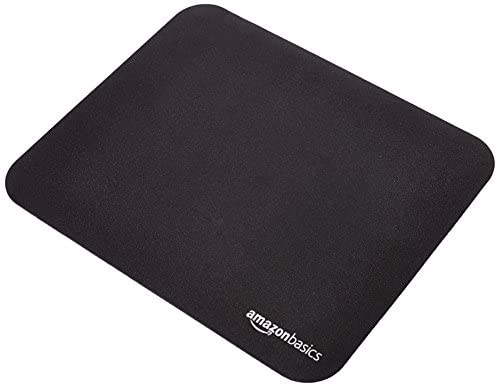Apple, Meta, and Google have all mulled businesses based on satellites orbiting the Earth, but last week Amazon became the first tech giant to actually begin operating computers in space.
Don’t expect the Fed to help your investment in Amazon
The company launched two prototype satellites for its Kuiper constellation on Oct. 6, and 10 days later confirmed they had survived the trip to an orbit about 600 km (373 miles) above the Earth. They are able to generate power from the sun and communicate with Amazon engineers on the ground as testing gets underway.
To meet the requirements of its satellite license, the company needs launch more than 1,600 spacecraft by mid-2026. As a result, production lines in Redmond, Washington, are spinning up to start spitting out new satellites early next year.
How did Amazon get here? It took a founder, Jeff Bezos, who is serious about space; a team of engineers driven away from SpaceX by Elon Musk; and a company whose credibility in the markets let it plan at least $10 billion in capital expenditures without yet shaking the confidence of investors.
Why Silicon Valley went to space
The first tech luminary to get interested in satellite internet was Bill Gates. As chairman of Microsoft in the 1990s, he backed a company called Teledesic that intended to provide internet connectivity from space. But after launching one satellite, the company foundered in the tech crash—it had underestimated the cost of getting all of its spacecraft in orbit, and ran out of money at a time when tech investors were pulling back from risky businesses.
A decade later, new tech giants began thinking about putting computers in space once again. Meta and Google—both software companies, not hardware makers—measured their future prospects on the number of users they could add to their platforms. Strategists at both companies saw expanding access to the internet itself as vital, and looked to space investments as a way to expand their customer base, particularly in rural areas and emerging markets where terrestrial fiber connections had yet to arrive.
All things being equal, putting your communication system in orbit above the Earth can be very efficient. But as we’ll see, some big obstacles stood in the way.
Facebook’s Athena, Google Loon, and Apple, too
In 2013, Facebook CEO Mark Zuckerberg pitched internet.org, a partnership designed to expand access to the web around the world. The project came to include plans for endurance drones hovering above the planet, beaming connectivity to the Earth below, but also satellite connectivity.
Facebook leased capacity from a Eutelsat spacecraft to provide internet access over Africa. But the satellite was destroyed in 2016 when a SpaceX rocket exploded during pre-launch testing. Later, a Facebook subsidiary worked to develop an internet satellite called Athena that used a unique radio system, but it was never able to get permission from the FCC to demonstrate the technology in space.
Google, meanwhile, adopted a similar agenda. Its main bet was on balloons. The Google Loon project promised to use high-altitude balloons with radio systems to float above areas with limited connectivity, beaming internet below. The company also engaged in talks with telecom entrepreneur Greg Wyler, whose company O3B launched a satellite network to provide connectivity in emerging markets that was later purchased by SES. Wyler proposed a more elaborate version of the network to Google, but the plan never got off the ground to due to concerns about cost and complexity.
Wyler would ultimately pitch a similar collaboration to Elon Musk and SpaceX before the two entrepreneurs went their separate ways, with SpaceX launching the Starlink network and Wyler founding OneWeb.
Apple, though ostensibly a hardware company, saw the increasing importance of getting users into its ecosystem of devices and applications. In 2019, Bloomberg reported that the company had created a division working on its own satellite network to connect iPhones. Apple never commented on the effort, but it appears to have been set aside in favor of a more straightforward approach: Over several years, Apple leased capacity and financed upgrades for Globalstar, a small satellite company, and revealed last year that its spacecraft would provide dedicated emergency connectivity for iPhone users.
Amazon enters the arena
In 2019, regulatory filings revealed that Kuiper Systems LLC, a company seeking permission to launch thousands of satellites, was a wholly owned subsidiary of Amazon. Bezos had entered the fray with a project named after the Dutch-American astronomer and planetary scientist—and surprisingly chose Amazon as the corporate home of the new satellite constellation instead of his space company, Blue Origin.
Amazon sources say the initiative emerged from the same concerns that drove Facebook and Google: growing the company’s potential customer base by expanding access to the internet in places where terrestrial infrastructure faced delays or difficulties.
But they faced the same challenges as the other firms. Satellite internet networks were incredibly expensive, and relied on novel technologies and architectures. Whereas most communications satellites were large spacecraft parked in a high orbit over a single spot in the Earth, the new model for Starlink, Kuiper, and OneWeb is to use hundreds or thousands of cheaper, low-flying satellites to link up users below. Whether or not that design would work was an open question when Amazon got into the game, just a month after SpaceX launched the first 60 operational Starlink spacecraft.
Bezos’ willingness to make a big bet on space clearly set him apart from the executives at Meta, Google, and Apple who flirted with capital-intensive communications networks without greenlighting the projects. They might not have regretted their decisions in 2020 when OneWeb entered bankruptcy; the company emerged from the process as a going concern thanks to new investments from the UK government and India’s Bharti Enterprises, but it reminded everyone of the rich history of failures in space telecommunications.
Amazon’s investment in Kuiper, on the order of $10 billion, is thought to be the company’s second-largest investment ever, only behind its $13.7 billion acquisition of the grocer Whole Foods in 2017. Bezos’ familiarity and passion for space may have been part of the decision, but the ability to deploy that much money, however, has always been part of Amazon’s secret sauce. For years, investors boggled at how it could maintain its stock price without turning in huge profits, as it invested in the logistics networks underlying its e-commerce products, and then developed the network of computing centers behind Amazon Web Services, now the main driver of the company’s profits. The architecture of AWS also gives the company experience managing secure networks for the most demanding customers in the world, from AI start-ups to the US Department of Defense.
Amazon also was able to capitalize on the work done by its rivals. In 2018, Musk, dissatisfied with the pace of work on Starlink, fired much of the senior leadership team, including its top executive, electrical engineer Rajeev Badyal. Badyal, who previously helped develop the Zune music player at Microsoft, reappeared shortly thereafter as the leader of the Kuiper project, and no doubt understood the technology tradeoffs required to make a successful business case for a new satellite network. Amazon also benefitted from Meta abandoning its satellite plans; in 2021, the company acqui-hired a team of Facebook satellite engineers to bolster Kuiper. Now, Amazon says more than 1,400 people are working on the project.
Kuiper is in space. Now what?
With two satellites in orbit, Kuiper has done more than most tech firms in space. But now it needs to catch up with Starlink, which already operates nearly 5,000 satellites serving more than 2 million customers in 60 countries around the world. To comply with the license granted by the Federal Communications Commission, which regulates satellites in the US, Amazon has to launch half of its constellation by July 2026, or 1,618 spacecraft. And Amazon will need to win licenses to offer Kuiper service in other countries if it wants to most efficiently recoup its investment in the global network; thus far, the company says it has licenses to operate in 20 countries around the world.
Just manufacturing that many satellites in that time period would be impressive; getting them into space will be equally hard. Amazon signed what is likely the largest rocket purchase in history—mainly on vehicles that have yet to take flight—but that contrasts with SpaceX’s vertically integrated advantage: Elon Musk gets rockets at cost. And, because the deal involves purchasing rockets built by Bezos’ Blue Origin or dependent on Blue Origin-built engines, it represents a related-party transaction that some shareholders have sued the company over, alleging the deal wasn’t appropriately vetted. Amazon says the lawsuit’s claims are “completely without merit.”
New spacecraft in orbit often reveal issues that need to be fixed in the future. One thing to watch for is the brightness of Kuiper’s spacecraft. Starlink’s initial satellites were visible enough to interfere with astronomical observations and the company has had to modify their design to reduce their visibility. SpaceX also has updated its satellites several times, including adding optical laser communication systems and designing a larger, more powerful version that Musk says is necessary to close the business case for Starlink. Amazon wouldn’t comment on the design of its Kuiper satellites, which appear to be larger than the initial Starlink vehicles, but in-orbit testing could reveal similar issues with the first generation of spacecraft.
Another challenge awaiting Amazon is the cost of its user terminals. SpaceX’s started off costing the company more than $1,000 to make, and it took a loss on initial distribution to customers. Now, SpaceX executives say they have driven down its cost below the $599 customers pay for their terminal. Amazon says the Kuiper terminal costs $400 to manufacture and that a cheaper, smaller version is forthcoming. The current terminal has delivered connections at speeds of 400 Mbps in ground testing; the connectivity monitoring service Ookla found Starlink delivering median download speeds of over 100 Mbps in 14 European countries in a recent analysis, though that reflects demand on the system as well as its baseline capabilities. Kuiper operates on a different section of the radio spectrum than SpaceX, called the Ka-Band, and had to design what it says are the first software-controlled antennas for those frequencies that combine transmission and reception in one piece, helping cut manufacturing costs.
Starlink has proven useful enough to customers that SpaceX has increased prices several times now, and market analysts will be watching closely to see how Amazon prices its offering out of the gate. Meanwhile, Starlink and other satellite internet providers have been criticized for service that is too expensive for many customers in poor regions without access to the internet. It remains to be seen if Kuiper also will wind up focusing on the more common customer base for satellite telecoms: remote-working techies, oil rigs, cruise ships, militaries, and airlines.
Amazon says it expects to begin beta testing the service with customers in the middle of 2024. “It is very encouraging to see this advanced network start to come together,” Badyal said in a statement. “It gives me a lot of hope that we can make a real difference in giving unserved and underserved communities access to high speed internet connectivity.”


